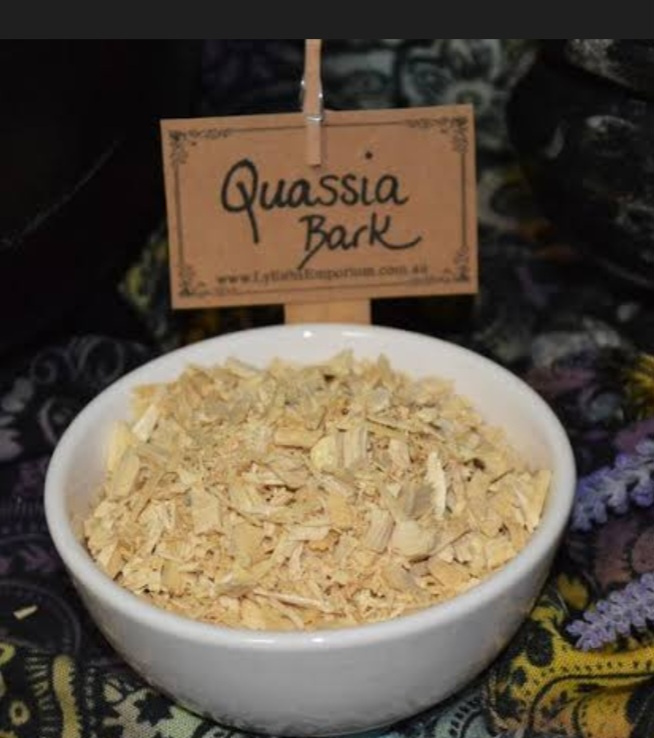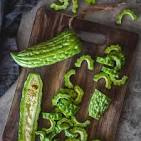Name a Fruit or Veggie A to Z
Replies
-
B- Bok Choy
0 -
B - Blue berries
1 -
C - Citron
1 -
D - Drumstick pods and leaves are a storehouse of essential nutrients, whereas the leaves are the most nutrient part of the plant and one of the finest sources of calcium, iron, zinc, selenium and magnesium. Fresh pods and seeds are a great source of oleic acid, a healthy fatty acid which is known to promote heart health.
1 -
E- Eggplant
0 -
F- French Beans
0 -
G - Green grapes
1 -
H - Hairy potatoes.
There is a wild potato species (Solanum berthaultii) known for its hairy foliage and stems.
1 -
They sound scary!
I - icicle raddish
1 -
now that’s 2 different veggies Icicle radishes and Zhairy Potatoes, first I’ve heard of them!
J- Jalapeño Peppers 🌶0 -
K- Kohlrabi
1 -
Icicle radishes are long like a carrot and white like an icicle hanging off a roof. They are milder than the round red ones. This group really keeps our minds sharp learning new things.
L - Leek
2 -
M- Mango 🥭
0 -
I have learned a lot from this thread too, Linda.
N - Nardostachys
A spice! It is a perennial that grows in the Himalayas, primarily in a belt through Kumaon, Nepal, Sikkim and Bhutan at elevations of 3,000–5,000 m (9,800–16,400 ft),[4] and in northern Myanmar and western and central China.[2]
It is a source of a type of intensely aromatic amber-colored essential oil, spikenard. The oil has, since ancient times, been used as a perfume, as a traditional medicine, and in religious ceremonies. It is also called spikenard, nard, nardin, or muskroot. It is considered endangered due to overharvesting for folk medicine, overgrazing, loss of habitats, and forest degradation.
The plant grows 10–50 cm (4–20 in) in height and has pink, bell-shaped flowers.
Rhizomes (underground stems) can be crushed and distilled into an intensely aromatic amber-colored essential oil, which is very thick in consistency. Nard oil is used as a perfume, an incense, a sedative, and a herbal medicine said to fight insomnia, birth difficulties, and other minor ailments.
(I know this isn't a typical thing to find in our kitchens but it can be ingested as a medicine for various complaints)
1 -
O - Orach: Orach is a leafy green that can be red, green, or purple. It’s like a chameleon of the vegetable world, changing colors and adding beauty to your plate.
1 -
P- Parsnips
0 -
Q - Quassia Bark
People use quassia for stomach and intestinal problems, diabetes, lice, skin conditions, and many other conditions, but there is no good scientific evidence to support most uses. In manufacturing, quassia is used to flavor foods, beverages, lozenges, and laxatives. The bark and wood have been used as an insecticide.
1 -
R - Ramontchi - Flacourtia indica (known commonly as ramontchi, governor's plum and Indian plum), is a species of flowering plant native to much of Africa and tropical and temperate parts of Asia. It has various uses, including folk medicine, fuel, animal food and human food. This is a bushy shrub or tree with a spiny trunk and branches. In shrub form, it grows up to 25 feet (7.6 m), and as a tree, it reaches a maximum height around 50 feet (15 m). The drooping branches bear oval leaves. The seeds are dispersed by birds.[3] This tree has thorns similar to that of a lime or lemon tree. If in contact with the thorns, it leaves a nasty stinging pain.
2 -
S- Sesuvium portulacastrum,
Sea purslane is a highly nutritious plant valued for its edible leaves, which are eaten raw or cooked and considered an excellent vegetable.
The leaves have a succulent texture with a salty and slightly sour flavour reminiscent of sorrel or oxalis.
The leaves’ high salt content often requires repeated boiling in fresh water to make them palatable or are pickled.
Sea purslane is a good source of vitamin C, and it is harvested in many parts of the world as a wild vegetable and sold in local markets.
Sea purslane is cultivated as a ground cover to prevent erosion, particularly in coastal dune areas.
It is a pioneer species that colonises sand, growing well on beaches, dunes, and other salty, well-drained soils.
It has potential applications in phytoremediation for heavy metal pollution sites, helping to detoxify and stabilise contaminated soils.
In the United Arab Emirates, it is also used as a revegetation plant for salty areas. Sea purslane is a hardy, low-maintenance plant that thrives in well-drained, sandy soils. It prefers a sunny position and tolerates both acidic and alkaline conditions.
The plant is exceptionally tolerant of salty environments and can grow in coastal areas with high salinity.
Once established, sea purslane is also highly drought-tolerant, requiring little to no irrigation or fertiliser.
Sea purslane is native to numerous coastal and island areas across the Americas, Africa, Asia, and Oceania, including the Canary Islands, Madagascar, and Western Australia.
Harvesting: summer when the leaves are young and tender.
1 -
Wow. You both found good information, Judith and Linda!
T - Three Cornered Leek
Three-cornered leeks are very versatile and tasty you can eat the stems, bulbs and flowers raw in salads like spring onions. The flowers have a beautiful fresh and peppery taste. Or you can cook them and add them to a variety of savoury dishes like stir-fry's, stews, soups and pasta.
0 -
U - Uche is a South Asian vegetable known as bitter gourd for its mouth-puckering bitter taste. The bitterness increases as the bitter gourd ages in the plants. When they’re young and green, they have fewer seeds and are beautifully incorporated into a fried recipe. And they taste best when they’re unripe and green. The ripe ones contain lots of seeds and have a puckering flavor. Those who know the arts of cooking can reduce the bitterness of uche vegetables. You can make broth of these uche vegetables, but it’s always better to fry these veggies.
0 -
V- Vidalia Onions
0 -
W - Wasabi
1 -
X- XANTHIUM STRUMARIUM
Origin: Xanthium strumarium, commonly known as cocklebur or rough cocklebur, is a plant species that produces small, spiky fruits. It is native to North America, but can now be found in Australia, New Zealand, and South America. Unfortunately, it is largely considered an invasive weed. This fruit may be the strangest entry among foods that begin with the letter X.
Taste and Uses: The seeds of Xanthium strumarium are toxic and not meant for consumption. The fruit itself is typically not consumed due to its bitterness and toxicity. Not surprisingly, it has limited culinary uses. Historically, some Native American tribes used it for medicinal purposes, but it’s not commonly used today. It is mainly considered a weed or invasive plant in agriculture.
0 -
X- XANTHIUM STRUMARIUM
Origin: Xanthium strumarium, commonly known as cocklebur or rough cocklebur, is a plant species that produces small, spiky fruits. It is native to North America, but can now be found in Australia, New Zealand, and South America. Unfortunately, it is largely considered an invasive weed. This fruit may be the strangest entry among foods that begin with the letter X.
Taste and Uses: The seeds of Xanthium strumarium are toxic and not meant for consumption. The fruit itself is typically not consumed due to its bitterness and toxicity. Not surprisingly, it has limited culinary uses. Historically, some Native American tribes used it for medicinal purposes, but it’s not commonly used today. It is mainly considered a weed or invasive plant in agriculture.
0 -
We have lots of cockleburs in the mountains and we do consider them an invasive weed. Their spiky seed pods would get in our dog's ears and cause her a lot of pain. She was a cocker spaniel and had nice fluffy hair on her ears that the cockleburs loved.
Y - Yellow pear tomatoes (much sweeter than cherry tomatoes I think)
1 -
Z - Za'atar
a versatile Middle Eastern spice blend, often including dried thyme, oregano, sumac, and sesame seeds according to Wikipedia. Za'atar can be used to season a variety of dishes, including hummus, baba ghanoush, vegetables, and meats.
1 -
A- Asparagus
0 -
B- Bitter Melon
Bitter melon, also known as Momordica charantia, is a tropical and subtropical vine-grown fruit known for its distinctive bitter taste. It's used both culinarily and medicinally in various cultures. While it's often eaten cooked to reduce bitterness, it's also consumed in juice form, particularly for its purported benefits in managing blood sugar levels.
0 -
C - Cassia
Another name for some types of Cinnamon.
1





